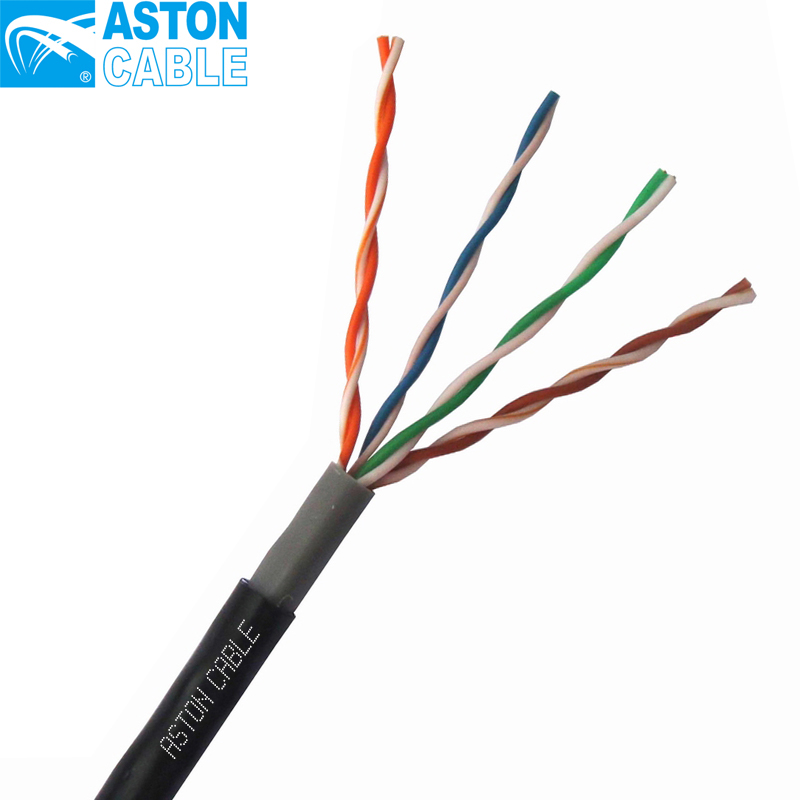1. outdoor lan cable: An Introduction
The concept of using LAN cables outdoors might seem straightforward, but the reality involves various considerations. A LAN cable, or Ethernet cable, is typically used to connect devices within a local area network. With the advent of external Wi-Fi access points and surveillance cameras, incorporating LAN cables outdoors has become increasingly common.
● Understanding LAN Cables
LAN cables are categorized based on their data transmission capabilities, with common types including Cat5e, Cat6, and Cat6A. The use of these cables outdoors requires special considerations due to exposure to environmental factors.
2. Types of Ethernet Cables for Outdoor Use
When planning an outdoor network installation, choosing the right type of Ethernet cable is crucial. The cable must withstand various environmental conditions, such as UV radiation, moisture, and temperature fluctuations.
● LLDPE and HDPE Jackets
LLDPE (Linear Low-Density Polyethylene) and HDPE (High-Density Polyethylene) are preferred materials for outdoor cable jackets. These materials offer increased durability and resistance to UV radiation, essential for outdoor applications.
● Direct Burial and Aerial Cable Options
Direct burial cables are designed to be buried underground, while aerial cables are suitable for installation above ground. Both options have specific construction features to withstand their respective environments.
3. Considerations for Fire Safety Outdoors
The installation of Ethernet cables outdoors must comply with fire safety regulations, which differ between commercial and residential settings.
● Residential vs. Commercial Regulations
In commercial installations, unmarked outdoor cables must transition to approved indoor cables within a specified distance upon entering a building. Residential guidelines offer some flexibility for CMX-rated cables, allowing extended use under certain conditions.
● CM and CMX Cable Ratings
Cables with CM (Communications Multipurpose) and CMX ratings meet specific fire safety standards. CMX-rated cables may be used indoors in residential settings but should not exceed a particular thickness.
4. Planning Your Outdoor Ethernet Cable Run
Proper planning is essential for the successful installation of outdoor LAN cables. This involves mapping out the installation path, considering potential obstacles, and ensuring the cable length is sufficient.
● Measuring Cable Length Accurately
Accurate measurements are crucial to avoid coming up short or wasting resources. Planning for some slack at each end and accounting for turns and bends is also recommended.
● Identifying Potential Obstacles and Challenges
Consider environmental factors such as terrain and nearby electrical installations that could interfere with the cable's performance.
5. Selecting the Right Ethernet Cable
Choosing the appropriate Ethernet cable involves understanding its specifications and how they align with environmental conditions and network requirements.
● Importance of Understanding Cable Categories
Different cable categories offer varied performance levels, from basic Cat5e to high-speed Cat6A. The choice depends on the required data transmission speed and the installation environment.
● Factors Affecting Cable Choice: Environment, Speed, and Interference
Consider environmental elements, desired network speed, and potential sources of interference when selecting a cable.
6. Shielded vs. Unshielded Ethernet Cable Needs
Determining whether to use shielded or unshielded Ethernet cable depends on the installation's specific interference risks.
● When to Use Shielded Ethernet Cable
Shielded cables are necessary when installations are near high-voltage lines or environments with high electromagnetic interference (EMI).
● Potential Interference Sources Affecting Cable Performance
Identify sources of EMI, such as motors or radio frequencies, that could impact the cable's performance.
7. Installation Techniques for Outdoor Cables
Employing the right installation techniques ensures the long-term effectiveness and reliability of outdoor LAN cables.
● Tips for Installing Ethernet in Conduit
Conduit installation protects cables from physical damage and environmental factors. Ensure conduits are appropriately sealed to prevent moisture ingress.
● Best Practices for Overhead Aerial Installations
Proper tensioning and support are critical for aerial installations, especially over long distances.
8. Mitigating Ground Loops and ESD Risks
Mitigating electrical interference and electrostatic discharge (ESD) is crucial for maintaining network integrity.
● Understanding Ground Loops and Their Impacts
A ground loop can introduce unwanted voltage into a system, causing data errors or equipment damage. Proper grounding practices help prevent this.
● Protection Against Lightning and Electrostatic Discharge
Implement measures to protect installations from lightning strikes and ESD, particularly in regions prone to thunderstorms.
9. Fiber Optic Cable as an Alternative Option
In some cases, fiber optic cables may offer a more suitable solution for outdoor network installations.
● Advantages and Disadvantages of Fiber Optic Cables
Fiber optic cables provide high bandwidth over long distances, but they can be more expensive and challenging to install compared to traditional Ethernet cables.
● Comparing Fiber Optics to Traditional Ethernet for Outdoor Use
Evaluate the specific needs of the network to determine if fiber optics is the more effective choice for the application.
10. Maintenance and Longevity of Outdoor LAN Cables
To ensure continuous network performance, regular maintenance of outdoor LAN cables is essential.
● Ensuring Durability and Performance Over Time
Inspect cables periodically for wear and environmental damage to maintain their functionality.
● Regular Checks and Preventative Measures for Cable Upkeep
Implement preventative measures, such as protective enclosures or updated sealing techniques, to prolong cable lifespans.
In conclusion, installing LAN cables outdoors requires careful planning and consideration of environmental factors and regulations. Choosing the right materials and installation techniques can significantly enhance network reliability and performance.
Aston Cable is a leading manufacturer specializing in communication cables, including outdoor LAN cables. With over 20 years of experience and a comprehensive production capacity of around 500km per day, Aston Cable is renowned for its quality and innovation. Our factory, based in Hangzhou Linan City, focuses on enhancing customer satisfaction through superior service and quality products, aligning with the evolving needs of the security and data transmission industry.

Post time: 2024-12-01 19:02:04





